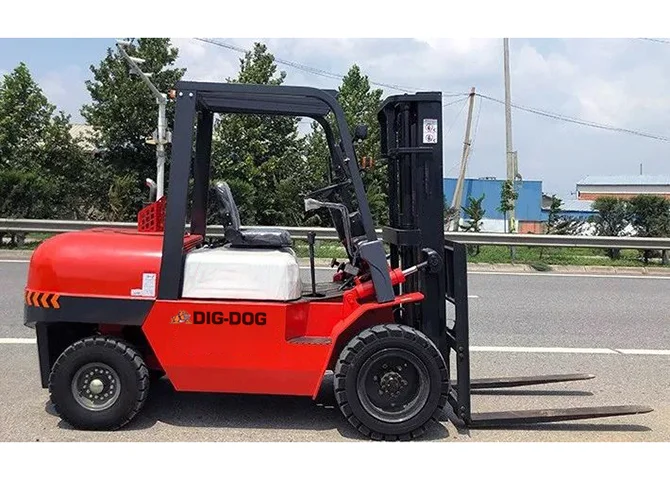In recent years, the growing popularity of compact excavators has led to a variety of models that are ideal for landscaping and hard landscaping projects. With all the options, how do you find the right machine for you?

Dig-Dog's excavators product specialists offer five simple tips to help you evaluate your options:
Start with the basics. Do you need a compact excavator? If you regularly hire or subcontract with a small excavator, you may have reason to add one to your equipment fleet. Generally, landscape contractors, once they own the machine, find it more useful than expected.
Contractors should also ask whether the required units will meet their needs. Landscaping contractors should evaluate expected tasks and select a machine that can perform those tasks and has room for growth.
It is also important to evaluate the maximum utilization of the machine. Does the manufacturer provide attachments and does the dealer have inventory? Does the machine have an easy-to-use accessory mounting system?
For most landscaping contractors, machine size is critical as you install irrigation and move materials to create outdoor environments in residential and commercial Spaces. The contractor needs to assess the expected site constraints -- usually widths. In general, medium to full-size compact excavator models are attractive to the landscaping industry when large machines are too bulky.
If possible, test the compact excavator you are considering under realistic conditions.
Some manufacturers offer compact excavators with retractable chassis if contractors run into narrow areas. Connor says the feature is particularly popular with landscape contractors with limited access. It allows the operator to retract the landing gear, pass through a gate or fence, and then deploy the gear while actually working.
Knowing that contractors don't want to sacrifice performance for size, equipment manufacturers are offering more power for their miniature excavator models. Some of the smaller compact excavator models have more than 3,500 pounds of bucket digging force. To increase excavation range or depth in narrow areas, contractors can choose compact excavators with long or retractable arm options. The retractable boom option is a retractable boom that provides the best of both worlds with power and reach, with some offering an additional 30 "reach when fully extended.
For example, if lifting large stones is a routine, repetitive task for an excavator, you need to choose a machine that can easily do the job. For example, if the cover area is 8 feet, then absolutely at the very least, you should be looking for a machine that can dig 10 to 12 feet for decent production.
Today, there are diggers with zero-tail swing and minimal tail swing, which allow the operator to rotate more unrestricted and provide flexibility when working close to objects or against walls. The typical zero-tail swing function virtually eliminates the chance for the rear end of the excavator to inadvertently contact objects around it. Depending on the manufacturer, Connor said, the entire frame may be designed to stay within the width of the track to further avoid damage.
If you anticipate that your daily work must be done through narrow property lines, gates or fences, then a traditional tail-swing excavator may be more suitable for your equipment fleet. For example, the typical width of a conventional 3 - to 4-metric ton tail-wagging compact excavator is about 60 inches, while the width of zero-wagging and min-wagging excavators with similar performance is about 70 inches.
A very popular, practical and necessary feature of compact excavators is the easy to use accessory mounting system. Many manufacturers offer their own attachment installation systems for common connections, such as trenchers for digging irrigation and power lines, auger drills for digging posts and planting trees, and tilting fittings and graded buckets for grading. The rotating grab moves vegetation and pavers, grabs wood and specs, and places boulders in hard landscaping projects.
Many compact excavators come with accessory mounting systems that allow the operator to quickly and easily switch between attachments. Optional hydraulic "quick connect" systems usually provide faster attachment replacement.
The comfort of compact excavators is important to a growing number of buyers. This trend is pushing manufacturers to increase operator space, enhance machine access and offer features such as enclosed cabs with heating and air conditioning. Some compact excavators also feature an automatic shift driving system and an automatic idle throttle to improve the operator experience.
Manufacturers have built a number of safety and maintenance features into their compact excavators to protect operators. For example, compact excavators may include console locking systems to help avoid accidental activation of the machine's boom, arm, bucket, rotary and walking systems. Gardeners should also check to see if the manufacturer offers a TOPS/ROPS grade for the cab and/or roof and retractable seatbelts, Connor said.
When comparing compact excavator models, it is recommended to investigate whether routine maintenance items can be easily accessed to check all routine checkpoints, such as critical machine fluids and other critical maintenance items. Centralized lubrication points for rotary bearings, pinion gears and swing arms are also important.
On top of that, the best way to compare compact excavator models is to operate them under load, as not all compact excavators are created equal. You should aim for real-world demonstrations, such as digging ditches or lifting decorative rocks, as some machines outperform competitors by up to 30% in production and speed -- just because of the balance between hydraulic systems and engine horsepower.

 BONOVO Group at INTERMAT 2024 Paris Exhibiton
BONOVO Group at INTERMAT 2024 Paris Exhibiton
 A Ultimate Guide to Clamp Forklifts and Attachments
A Ultimate Guide to Clamp Forklifts and Attachments
 How To Choose The Right Compact Wheel Loader
How To Choose The Right Compact Wheel Loader
 How Much Does a Forklift Weigh?
How Much Does a Forklift Weigh?